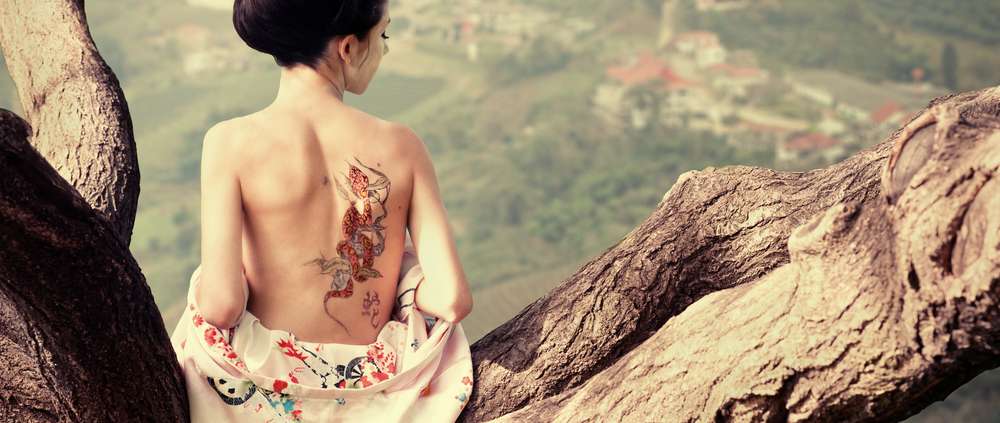The History of Traditional Japanese Tattoos
Japan has gifted much to the world, including stunning irezumi, or traditional Japanese tattoos. However, what many do not know is that Japan has a conflicted view of tattoos, due to the history behind them. While times and views are gradually changing, with people becoming more accepting of tattoos, irezumi continues to generate much discussion and controversy in the land of its creation.
Whether you are an enthusiast of Japanese culture who is planning on getting a traditional Japanese tattoo of your own or are simply curious about the past, here is everything you need to know about the history of irezumi.
What are Some Different Terms for Japanese Tattoos?
Before getting into the history of traditional Japanese tattoos, let’s first discuss some of the terminology. Most people have heard the word “irezumi,” which literally means to insert ink. Yet, there are other terms, “horimono,” meaning a thing that is carved. There is also “wabori,” for Japanese carving, “shisei,” or to pierce blue, and also “bunshin,” meaning body decoration.
Horimono is not just tattooing, however. It means to engrave on the surface of something, such as wood, metal, or skin. For instance, there is a type of art called Kamakura-bori, which is carved wood that is lacquered hundreds of times in a deep red color. When talking about tattoos, horimono is not the tattoo itself but the process of adding a design to the skin using the traditional tebori needle.
This technique requires a high level of skill and precision, as the artist must carefully control the depth and angle of the needle to ensure a clean, accurate design. Most modern Japanese tattoo artists use tattoo guns these days, but artists who use tebori can also be found—though you may have to travel to Japan for them!
The History of Traditional Japanese Tattoos
Now that you know some of the terms, let’s get into the background behind irezumi.
The Jomon Period
Tattoos in Japan can be traced all the way back to the Jomon period (ca. 14,000 BC to 300 BC). There are archaeological artifacts recovered from Jomon period ruins that suggest the people of that time would modify pottery with—you guessed it—horimono. Usually, they used metal needles, wooden handles, and silk thread to create elaborate designs consisting of dots, circles, and lines. Furthermore, those living during the Jomon period openly embraced body modification.
One example of a persisting Jomon period practice is still seen in the indigenous folk known as the Ainu, who live in northern Hokkaido. Ainu women tattoo their lips and hands as a show of strength.
Tattoos During the Edo Period
Though there are many years separating the Jomon period from the Edo period, not much had changed in terms of tattoo culture in Japan. It was not until the Edo period (1603-1868) that tattoos gained certain associations.
For one thing, tattoos became popular among the lower classes, particularly among firemen and laborers, as a form of identification and protection. These tattoos often featured images of animals, mythological creatures, and religious symbols. Tattoos were also used to brand criminals with their crimes. An excellent example of this is the story of the anime Golden Kamuy.
Tattoos and the Yakuza
In the late 18th and early 19th centuries, tattoos began to be associated with the yakuza, or Japanese organized crime syndicates. Yakuza members often had elaborate full-body tattoos, known as bodysuits, that depicted scenes from Japanese folklore and mythology, as well as animals and flowers. These tattoos were seen as a sign of loyalty to the yakuza and a symbol of their tough, rebellious image.
In addition to their symbolic significance, yakuza tattoos also serve as a form of identification and loyalty within the gang. Members often receive tattoos that depict their rank and status within the organization, and these tattoos are used to distinguish members from outsiders.
Much of Japan’s long-stemming negativity towards tattoos comes from full-body irezumi being associated with members of organized crime.
The Meiji Period
The end of the Edo period brought about the finale to many things in Japan, including the samurai and the open acceptance of tattoos. The Meiji Period (1868-1912), brought about what was called the Meiji Restoration, where the government attempted to rapidly modernize Japan and make it parallel to western civilization. One of the things the government did was ban tattoos, viewing them as a mark of barbarism and criminality.
The ban was partially lifted in 1948, but Japanese society continues to stigmatize those with tattoos. For instance, many individuals with tattoos cannot use public baths or hot springs (onsen). This is often a surprise for tourists who attempt to visit these famous locations, only to be barred from the service for their body art.
Despite the stigma, there are many younger Japanese who have tattoos, as they see them for what they are: a form of self-expression. Tattoos, including traditional Japanese irezumi, are being more readily embraced. Many Japanese artists have also gained international recognition for their traditional work.
Final Thoughts on Traditional Japanese Tattoos
The cultural history of traditional Japanese tattoos is as long and complex as the history of Japan. While tattoos have long been associated with criminal activity, they are also seen as an enduring form of self-expression in and out of Japan. Therefore, if you find yourself in love with the traditional irezumi style, keep the history in the back of your mind. You may not be able to enter an onsen if you visit Japan, but you will have a beautiful work of art to display!
Looking for your next tattoo? Check out Oracle Tattoo Gallery. Our team of artists cover a broad array of tattoo styles, including traditional and modern work. Give us a call or send us a message and tell us about your new tattoo.



